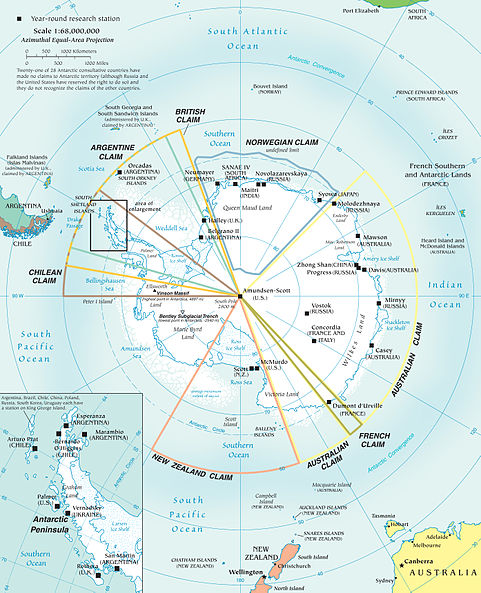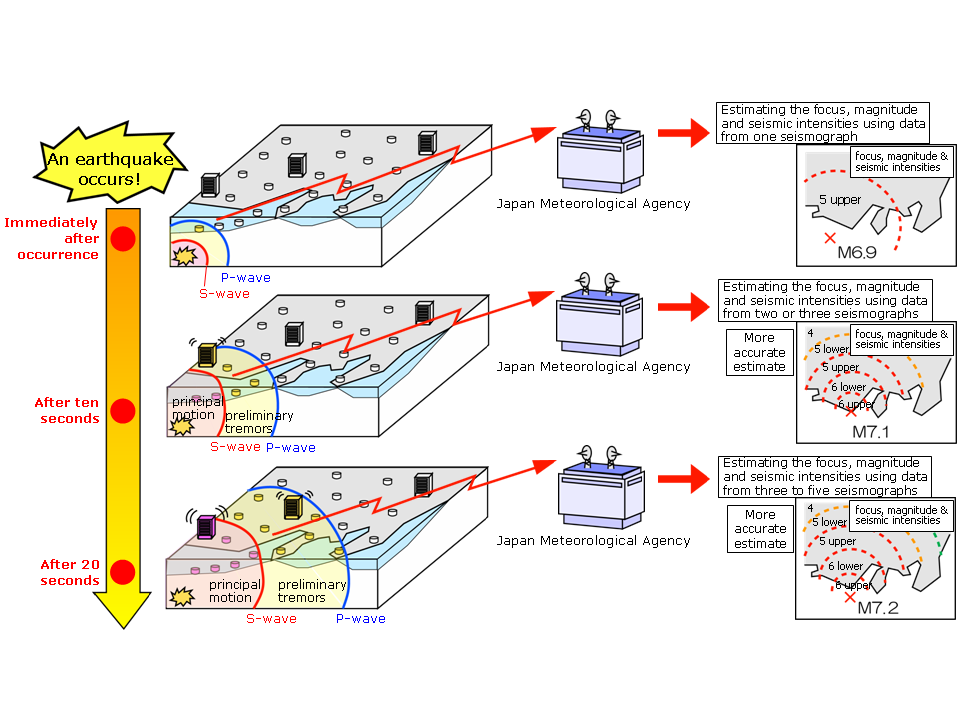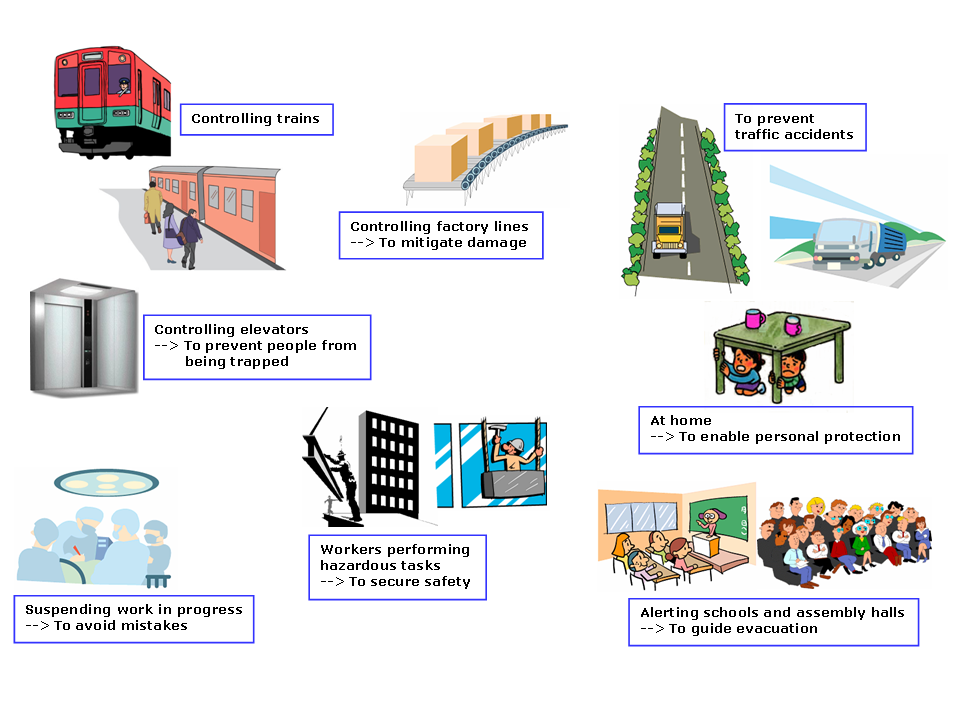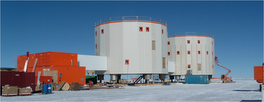Update: since writing this post, Chile and Argentina have reacted to the British submission to th UN Commission on the Limits of the Continental Shelf by announcing they will file their own claims. Read all about it in this follow-up post.
Who owns Antarctica?This question is one of many Antarctica-related questions my colleagues and I asked visitors to our
International Polar Year stand at the recent
Science Fair (Fete de la Science) held last weekend. It was of course a trick question, because no-one owns Antarctica. All territorial claims were frozen by the
Antarctic Treaty, which guaranteed the continued use of Antarctica exclusively for peaceful ventures, and the freedom of scientific investigation and cooperation in Antarctica.
So imagine my surprise the following Wednesday, when this article from the
Guardian newspaper appeared:
Britain to claim more than 1m sq km of Antarctica - Move would extend UK oil, gas and mineral rights.
Here are some quotes from the article (ellipses are my own):
The United Kingdom is planning to claim sovereign rights over a vast area of the remote seabed off Antarctica [...] The submission to the United Nations covers more than 1m sq km (386,000 sq miles) of seabed, and is likely to signal a quickening of the race for territory around the south pole [...]
The claim would be in defiance of the spirit of the 1959 Antarctic treaty, to which the UK is a signatory. It specifically states that no new claims shall be asserted on the continent [...]
The Foreign Office [...] has told the Guardian that data is being gathered and processed for a submission to the UN which could extend British oil, gas and mineral exploitation rights up to 350 miles offshore into the Southern Ocean. [...]
The Antarctic submission reflects the UK's efforts to secure resources for the future as oil and natural gas reserves dwindle over the coming decades[...]
The article raised two troubling questions in my mind:
how is such a claim compatible with the Antarctic Treaty System? and
is the Antarctic seabed legally exploitable? Before getting onto my high horse about this claim, I needed to look more closely into the Antarctic Treaty itself. The best source of information I could find was the
Antarctic Treaty Secretariat, where I re-discovered most of the facts described below.
The Antarctic Treaty deals with the issue of sovereignty in
Article IV, essentially maintaining the status quo of 1959 with regards to territorial claims and their recognition :
No acts or activities taking place while the present Treaty is in force shall constitute a basis for assenting, supporting or denying a claim to territorial sovereignty in Antarctica or create any rights of sovereignty in Antarctica. No new claim, or enlargement of an existing claim [...] shall be asserted while the present Treaty is in force.
Note that the Treaty does not require the countries with territorial claims made before signature of the Treaty to renounce them. The British, Australian, New-Zealand, French, Argentinian, Chilean and Norwegian claims were therefore frozen in 1959. [Note that to further complicate matters, the Argentinian and Chilean claims overlap with the British claim].
If no new territorial claims can be made or extended, what is this possible submission to the UN by the United Kingdom about? The submission would be to the
UN Commission on the Limits of the Continental Shelf (CLCS). This commission judges claims on the limits of a country's continental shelf, which in turn affect the definition of its territorial waters. According to the
Convention on the Law of the Sea (CLOS), claims to the CLCS should be submitted within 10 years of its entry into force for that country. As the UK signed the convention in 1997, should it wish to submit any claims, it should do so before the end of 2007. Hence the submission described by the Guardian article.
Something that was not mentioned in the Guardian article, but was brought to my attention by the Antarctic Treaty Secretariat site, was that Australia and New Zealand both submitted similar claims regarding the continental shelf adjacent to the regions of Antarctica over which they held territorial claims before 1959. The Australian claim was submitted in 2004 (Australia signed the Law of the Sea in 1994), while the New Zealand claim was submitted in 2006 (New Zealand signed the Law of the Sea in 1996).
In order to allay any concerns about the Antarctic Treaty, Australia requested that the CLCS not take any action for the time being on its Antarctic claim. The Guardian suggests the UK should make a similar request:
Ministers will have to decide under what terms the application to the UN would be made. One possibility might be for the UK government to lodge a legal claim with the UN's commission on the limits of the continental shelf and effectively park it for consideration at a future date.
As for any remaining environmental concern about future drilling off the coastal waters of Antarctica, the
Protocol on Environmental Protection, an addition to the Antarctic Treaty, specifically prohibits all activities relating to the Antarctic mineral resources except for scientific research (Article 7).
What are my conclusions after all this? Firstly, that as far as I can see the UK will be doing nothing illegal or morally wrong by submitting its claim to the UN, though it will most probably have to find an agreement with Argentina and Chile given their overlapping claims to Antarctica. Secondly, and more importantly, that at some time in the future, and preferably within the next 20 years, it will be necessary for the international community to put some order into its conventions and treaties, and to decide how it intends to balance national interests with environmental issues.
Update: since writing this post, the following posts/articles have come to my attention:
-----
Keep up to date with the latest developments at
http://sismordia.blogspot.com










































